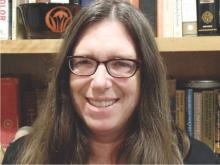Traumatic events are extremely common, with as many as 60% of children experiencing some trauma by age 18 years. About 15% of these children will develop posttraumatic stress disorder (PTSD).
Case summary
Jane is a 13-year-old girl who presented because of steadily escalating angry outbursts with her mother, irritable mood, and anxiety since her father went to jail 2 years previously. Prior to the father’s departure from the family, he drank heavily and had been physically violent to Jane’s mother through most of Jane’s life.
Since these events, Jane has been extremely angry and irritable, often fighting extensively with her younger sister. She has severe difficulty separating from her mother, often following her around or demanding to know everything that her mother is doing. Jane herself reports that she feels worried, irritable, and sad much of the time. She is especially angry when thinking about anything related to her father. Jane won’t talk about her father to anyone, except occasionally her mother and one friend. She has difficulty falling asleep and has nightmares. She never thinks about the future, and instead just lives day to day. Images from the past come vividly into her mind. She has highly negative, hopeless views of the world, and doesn’t trust people, so she is unwilling to consider any therapy. Jane’s mother also is highly irritable and snaps at Jane over small things while in the office.
Discussion
The DSM-5 diagnostic criteria for PTSD require that an individual has been exposed to a severe stressor that threatens death, serious injury, or sexual violence through direct experience, witnessing the event happening to others, or learning that the event happened to a close family member or friend. Not all people who experience such events will develop PTSD, however. Additional symptoms are grouped into four areas (rather than three as in the DSM-IV), and a diagnosis requires one or two symptoms in each area:
• Intrusive symptoms including intrusive distressing memories, recurrent dreams with content related to the event, dissociative reactions such as flashbacks, intense distress at exposure to triggers that remind individuals of the event, or marked physiologic reactions to triggers.
• Avoidance of stimuli associated with the event, either memories or thoughts or external reminders.
• Negative cognitions manifesting as changes in thoughts and mood beginning or worsening after the event. These are an inability to remember the event, persistent negative beliefs about oneself or the world, distorted thoughts about the cause or results of the event, persistent negative emotional states such as anger or guilt, decreased participation in activities, feelings of estrangement from others, or an inability to experience positive emotions.
• Changes in arousal and reactivity as shown by irritable behavior, reckless behavior, hypervigilance, an exaggerated startle response, concentration problems, or sleep disturbance.
There are several screening instruments for the presence of a history of traumatic events as well as for symptoms of PTSD. The Child PTSD Symptom Scale (CPSS) is one example of a simple, readily available screening tool. More extensive assessment is an important part of treatment by mental health clinicians.
Treatment
Psychotherapy interventions are the core of treatment for PTSD in young people. Interventions based on cognitive-behavioral therapy (CBT) are the most extensively researched, with trauma-focused CBT (TF-CBT) being the specific intervention with the most research (13 randomized controlled trials showing efficacy) for children and adolescents. There are several other approaches that have evidence of efficacy through randomized controlled trials, and have been specifically studied for different ages, cultural groups, and focus of intervention (group, family, classroom). Child-parent psychotherapy focuses on traumatized 3-to 5-year-olds and works with both parent and child. Eye movement desensitization and preprocessing therapy (EMDR), extensively studied for adults, has some randomized controlled trials in children. The National Child Traumatic Stress Network (NCTSN) has a website listing evidence-based interventions with descriptions of the extent of the evidence for these and other interventions, including the population for which the intervention was designed and information on training and dissemination.
A recent meta-analysis by Morina et al. identified 39 randomized controlled trials with psychological interventions targeting PTSD in children and youth and found a large (0.83) overall effect size vs. wait list control, and a moderate (0.41) effect size vs. an active control such as supportive therapy. There were enough randomized controlled trials to analyze the TF-CBT–based interventions as a group, and these had even larger effect sizes: 1.44 vs. wait list and 0.66 vs. active control. The non-CBT approaches did not have enough studies to be evaluated separately (Clin Psychol Rev. 2016 Jul;47:41-54).


